Ulűri̋qi̋ (ulűri̋kwi̋)
"Look at them, those coursers. Looking down at us, waving and tossing us coins like we were animals in one of those country zoos."Qimu - Water Dragon at the Edge of Dragon hoard 589 BEC -
Ulűri̋qi̋ is the continent of the element water "Qi̋" and means blue water. It covers an area of approximately 5,600 km², making it the smallest continent in Elaqitan. If you add the "Îbimiqùrií" with a water surface of approx. 11,500 km², it is the largest continent. Its inhabitants are called Ulűqírīrī. The main races are the Qírīrī and Qíȕˈbībi. While Qírīrī speak Qíímúri̋í, Qíȕˈbībi can communicate in any language.
Geography
At a glance
Total area: ca. 5.600 km²
Largest contry area / Island: Milúúlùhû 2.502 km²
Largest inland lake: Rui̋qǐri̋í 220 km² (Műűrûû)
Highest mountain: Rui̋bìgol 805 m (Milúúlùhû)
Longest river: Bìgomoī̯ 231 km
Biggest City: Bībibrú 865 km² / 205.632 inhabitants (Milúúlùhû)
Average temperature: 24,5° C
Resources: finned animals and reptiles, amphibians, crabs
Important places of ulúri̋qi̋anian magic:
Hoard of Lōmibúqò (Milúúlùhû)
Cave of Mîlúboh (Műűrûû)
Underwater school of Qôlúhì (Ùùqîîhrûbo)
If one limits the description of Ulűri̋qi̋s only to the landmass, then the main part of the continent is in the southeast of Elaqitan. In addition, the two large islands "Műűrûû" and "Qǐri̋i̋qì" belong to the "Toiáninh ad Midri".
Its appearance is primarily characterized by islands, archipelagos, marshes, deltas and waterfalls, including submarine ones. Many islands have shallow beaches that stretch endlessly into the sea and only drop off steeply after several kilometers. In addition, there are a large number of caves on the coasts and dangerous whirlpools, especially in the "Îbimiqùrií".
The "Bìgolooqűű" on "Milúúlùhû" and "Grőlőőqùbo" on "Qűmőhőőlùhû" are the largest mountains. The "Bìgomoī̯" is the longest river. On the islands there are otherwise rather smaller rivers and streams. The largest inland lake "Rui̋qǐri̋í" is located on "Qǐri̋i̋qì".
Countries
Ulűri̋qi̋ includes four countries, the islands "Mìbi̋i̋milùqìì", "Iőlùùqìì" and "Qǐri̋i̋qì" belong to the areas of "Milúúlùhû", "Qűmőhőőlùhû" and "Műűrûû". All countries are independent kingdoms, but maintain close trade and alliance partnerships.
Name
Residents
Size
Government
Capital
Residents
Size
Government
Capital
Milúúlùhû
Milúhûrī
2.502 km²
King
Bībibrú
Milúhûrī
2.502 km²
King
Bībibrú
Műűrûû
Műűrī
1.072 km²
King
Rűqí
Műűrī
1.072 km²
King
Rűqí
Qűmőhőőlùhû
Qűmőlùhûrī
1.065 km²
King
Műűmi̋bùl
Qűmőlùhûrī
1.065 km²
King
Műűmi̋bùl
Ùùqîîhrûbo
Ùùqíîîrûbo
961 km²
Queen
Ùùqîhlíb
Ùùqíîîrûbo
961 km²
Queen
Ùùqîhlíb
Ecosystem
In the subtropical zones, the average temperature is between 25°C and 35°C. In the temperate zones, the average temperature is between 10°C and 28°C.
Tectonics
Ulűri̋qi̋ extends across seven tectonic plates. The main plate is the eastern "Qírí Plate", which borders the "Balayiba Plate" and "Elaqis Plate" in the west, abuts the "Miqu Plate" in the south, touches the "Téshté Plate" in the north, borders on the "Sátáx-Plate" in the north-east and on the "Idacian Plate" in the east.
The islands "Qǐri̋i̋qì" and "Műűrûû" lie on the "Ningal Plate" and "Idabri Plate" respectively.
Climate zones
Ulűri̋qi̋ lies mainly in the subtropical "Ongotub Zone" and temperate "Ibûrû Zone". Only the northwestern island "Qǐri̋i̋qì" is in the temperate "Wôdrûd zone". In addition, some tracts of land are affected by the suptrobic "Hépútú Zone".
The weather of the islands lying in the latitudes of the Suptrobes are influenced by warm sea currents. Cold sea currents prevail on the remaining coasts of the temperate zones.
Special natural phenomena
During the warmer months, the waves glow many different fluorescent shades of blue.
Flora & Fauna
Due to the many shallow "sandbanks" there are extensive aquatic forests that provide habitats for many finned animals and water-loving reptile species.
On some coasts with calmer seas, plants grow with huge leaves that bloom on the water surface and attract various species of amphibians with their scents, which in turn "pollinate" the plants while laying their eggs.


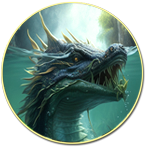
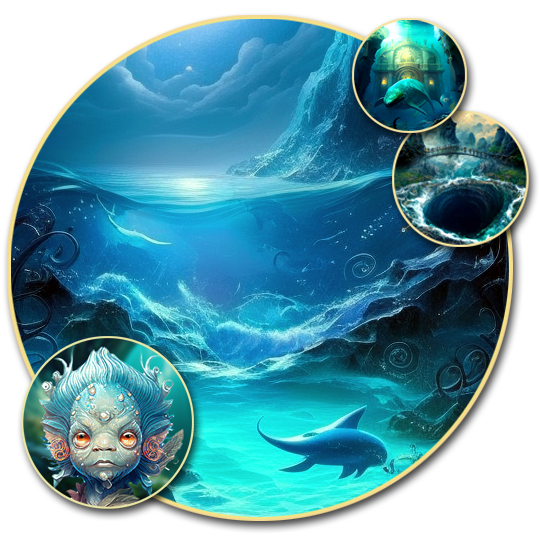

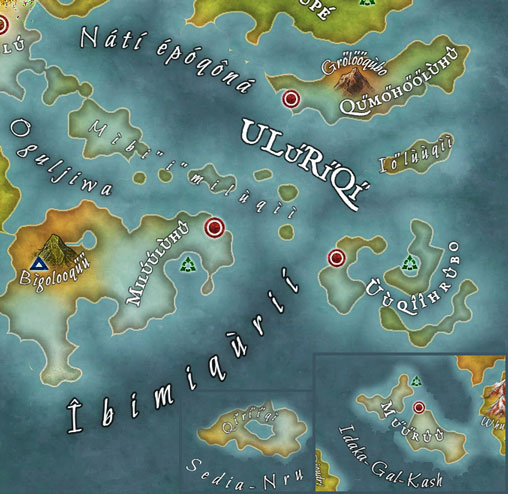
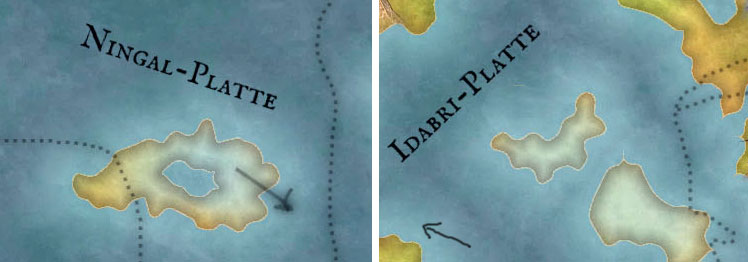

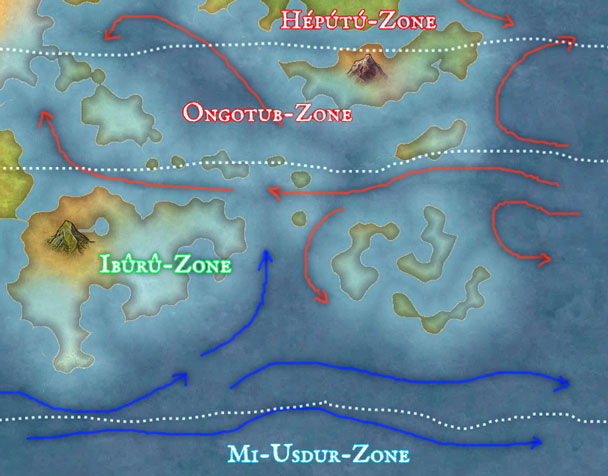
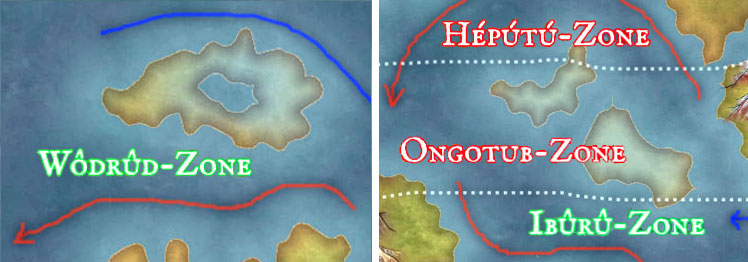
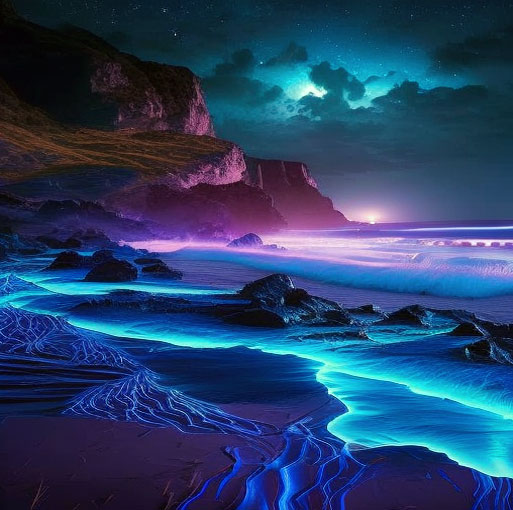
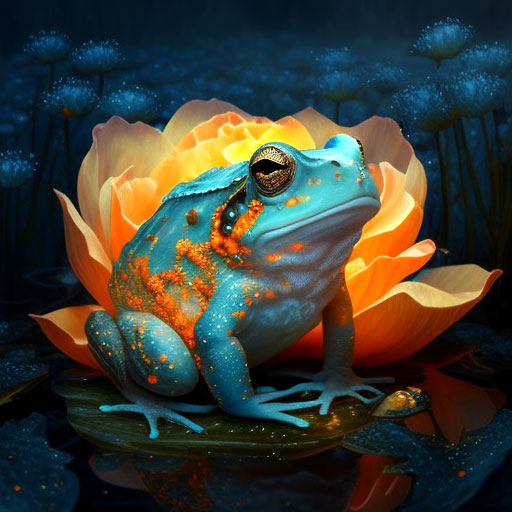
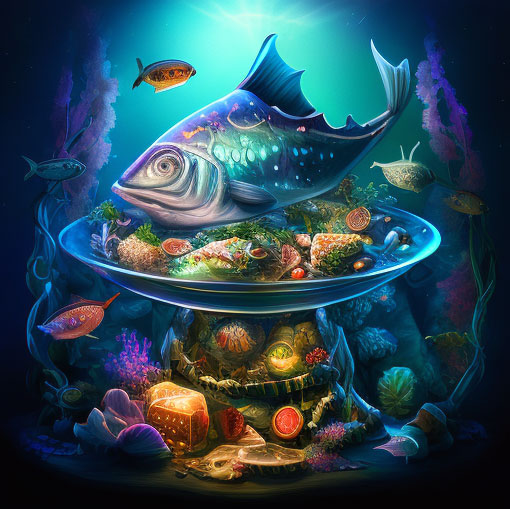

Comments